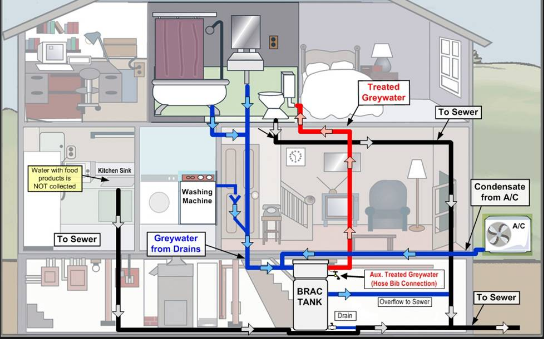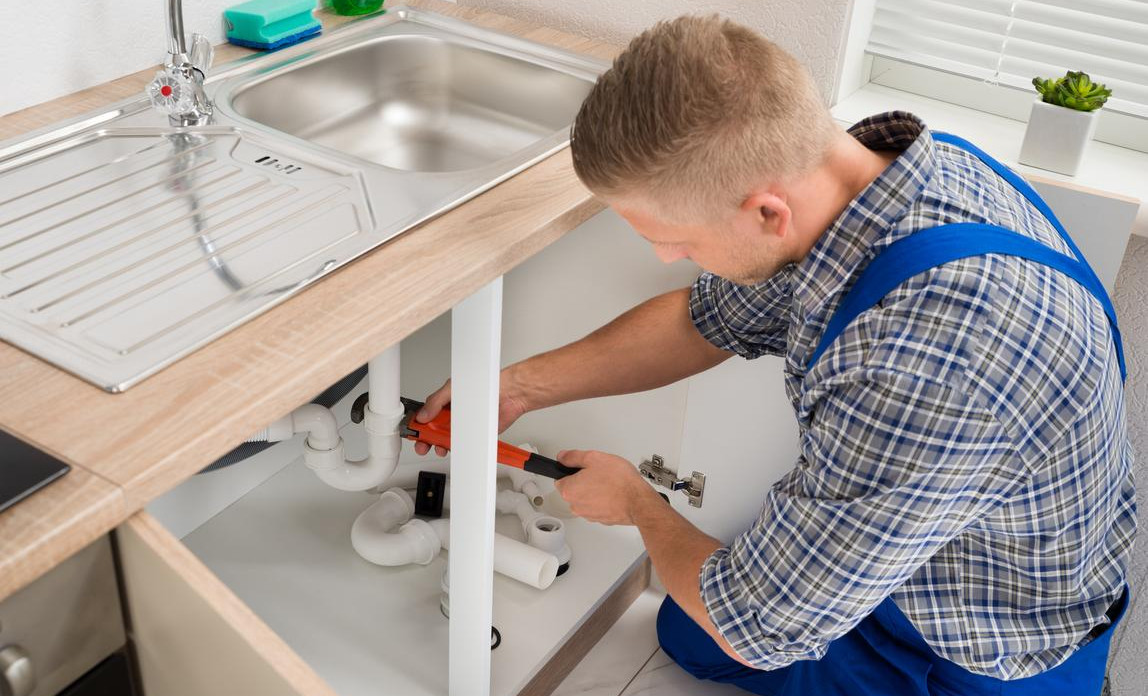Everyone has their unique ideas involving Exploring Your Homes Plumbing Anatomy.

Comprehending just how your home's plumbing system works is necessary for every home owner. From delivering clean water for alcohol consumption, food preparation, and bathing to securely eliminating wastewater, a properly maintained pipes system is essential for your household's health and wellness and convenience. In this comprehensive guide, we'll explore the elaborate network that comprises your home's pipes and deal tips on maintenance, upgrades, and managing typical concerns.
Intro
Your home's plumbing system is more than just a network of pipelines; it's an intricate system that guarantees you have access to clean water and effective wastewater removal. Understanding its elements and just how they interact can assist you protect against pricey fixings and ensure every little thing runs efficiently.
Basic Elements of a Pipes System
Pipelines and Tubing
At the heart of your plumbing system are the pipes and tubing that carry water throughout your home. These can be made of numerous products such as copper, PVC, or PEX, each with its benefits in regards to resilience and cost-effectiveness.
Fixtures: Sinks, Toilets, Showers, etc.
Fixtures like sinks, commodes, showers, and bath tubs are where water is made use of in your house. Recognizing just how these components attach to the pipes system aids in detecting issues and preparing upgrades.
Shutoffs and Shut-off Points
Valves manage the flow of water in your plumbing system. Shut-off valves are crucial during emergencies or when you require to make fixings, permitting you to separate parts of the system without interfering with water circulation to the entire home.
Supply Of Water System
Key Water Line
The major water line attaches your home to the local water system or a personal well. It's where water enters your home and is distributed to various fixtures.
Water Meter and Stress Regulatory Authority
The water meter procedures your water usage, while a pressure regulator makes certain that water streams at a safe pressure throughout your home's pipes system, stopping damage to pipes and fixtures.
Cold Water vs. Warm water Lines
Comprehending the distinction between cold water lines, which provide water straight from the primary, and hot water lines, which lug warmed water from the water heater, helps in repairing and preparing for upgrades.
Drain System
Drain Piping and Traps
Drain pipelines carry wastewater far from sinks, showers, and commodes to the sewer or septic tank. Catches avoid sewer gases from entering your home and additionally trap debris that can trigger blockages.
Ventilation Pipes
Ventilation pipes allow air right into the drainage system, preventing suction that can slow down drainage and create traps to vacant. Appropriate ventilation is necessary for preserving the integrity of your pipes system.
Importance of Correct Drain
Making certain appropriate drainage stops backups and water damages. Frequently cleaning drains pipes and maintaining catches can prevent expensive repairs and prolong the life of your plumbing system.
Water Heater
Types of Hot Water Heater
Water heaters can be tankless or standard tank-style. Tankless heating systems heat water on demand, while containers keep warmed water for prompt use.
Just How Water Heaters Connect to the Pipes System
Recognizing how water heaters attach to both the cold water supply and hot water circulation lines aids in identifying concerns like insufficient warm water or leakages.
Maintenance Tips for Water Heaters
Regularly purging your hot water heater to remove debris, examining the temperature setups, and evaluating for leakages can extend its life expectancy and boost energy effectiveness.
Usual Plumbing Problems
Leakages and Their Reasons
Leaks can happen as a result of maturing pipes, loose installations, or high water stress. Addressing leaks immediately stops water damages and mold and mildew development.
Clogs and Obstructions
Blockages in drains pipes and toilets are frequently triggered by purging non-flushable things or a build-up of oil and hair. Using drain screens and bearing in mind what drops your drains pipes can prevent clogs.
Signs of Plumbing Issues to Expect
Low tide stress, slow-moving drains, foul odors, or unusually high water bills are indications of prospective pipes troubles that need to be resolved without delay.
Pipes Upkeep Tips
Regular Inspections and Checks
Schedule yearly pipes examinations to capture concerns early. Try to find signs of leaks, corrosion, or mineral buildup in faucets and showerheads.
DIY Maintenance Tasks
Easy tasks like cleaning faucet aerators, checking for toilet leaks using color tablet computers, or shielding revealed pipelines in cool environments can stop significant plumbing problems.
When to Call an Expert Plumbing
Know when a plumbing concern calls for specialist know-how. Attempting complex repairs without proper expertise can bring about even more damage and higher repair prices.
Updating Your Plumbing System
Reasons for Updating
Updating to water-efficient components or replacing old pipes can boost water top quality, minimize water expenses, and enhance the value of your home.
Modern Pipes Technologies and Their Advantages
Explore technologies like wise leak detectors, water-saving toilets, and energy-efficient hot water heater that can conserve money and reduce ecological effect.
Cost Considerations and ROI
Compute the in advance costs versus lasting financial savings when thinking about pipes upgrades. Lots of upgrades pay for themselves via reduced utility bills and less fixings.
Environmental Effect and Conservation
Water-Saving Components and Home Appliances
Mounting low-flow faucets, showerheads, and toilets can dramatically minimize water usage without giving up performance.
Tips for Lowering Water Usage
Simple behaviors like taking care of leaks immediately, taking shorter showers, and running full lots of laundry and recipes can save water and lower your energy bills.
Eco-Friendly Pipes Options
Consider lasting plumbing products like bamboo for flooring, which is durable and eco-friendly, or recycled glass for kitchen counters.
Emergency Preparedness
Actions to Take During a Pipes Emergency
Know where your shut-off shutoffs are located and just how to turn off the water system in case of a burst pipeline or major leak.
Relevance of Having Emergency Calls Useful
Keep get in touch with details for local plumbers or emergency services easily available for fast response during a plumbing dilemma.
Do It Yourself Emergency Situation Fixes (When Applicable).
Temporary fixes like utilizing duct tape to spot a dripping pipeline or positioning a pail under a dripping faucet can reduce damage until a professional plumbing shows up.
Final thought.
Recognizing the makeup of your home's pipes system encourages you to keep it properly, saving time and money on repairs. By adhering to normal upkeep regimens and staying notified about modern pipes innovations, you can ensure your plumbing system operates efficiently for years to come.
HOW YOUR PLUMBING SYSTEM WORKS
Which Pipes Do What?
Blue lines = fresh water supply entering the building
Red lines = hot water supply entering the building
Grey lines = pipes carrying waste away from the building and venting pipes carrying gases away from the building (through the roof)
YOUR MAIN PLUMBING SYSTEMS
There are two main plumbing systems that support your home s basic plumbing needs one that brings clean water into your home, and one that sends dirty water away from your home. Connected to the toilet, bath, shower, and other faucets in your home, these two systems keep your water flowing in the right directions.
ACCESSING FRESH WATER
Fresh and clean water is brought into your home through the main water supply line . Filtered through one pipe, this water is pressured to flow into the various fixtures in your home at any given time.
This water can be sourced from a well located on your property, a pond or river (mostly cottages), or, as in most cases, from the city s municipal water treatment centre. However, it is important to note that water that is untreated, such as the water siphoned from ponds or rivers, may not be safe to drink. Personal water supplies always need to be treated for hardness and contaminants before consumed.
MUNICIPAL WATER SUPPLIES
Improve taste and odour
Remove sediment
Eliminate hardness
Reduce chlorine
COLD WATER SUPPLY VS. HOT WATER SUPPLY
Cold water flows into your home or building through the service line, which then distributes hot or cold water to your fixtures. This line is most commonly run through a central column that runs floor to floor. Hot water runs in short and straight pipes as the longer the pipeline, the more heat that will be lost in the transfer. Having shorter pipes also allows residents to access hot water more quickly.
WASTE WATER SYSTEM
Your wastewater system is divided into two parts pipes that send wastewater away from your home and venting pipes that send sewer gas away from your home. Sewage water travels through pipes that flush the water and waste towards local sewers that are operated and managed by your city or town. Most sewer systems rely on gravity to move the wastewater to where it needs to go.
The further away from your toilet or sink, the larger wastewater pipes become. This allows for waste to be disposed of from various parts of your home or business at once without pipe blockages. The angle and flow of these pipes are also essential for keeping your waste pipes clear of build up.
https://harrisplumbing.ca/how-your-home-plumbing-system-works/

HOW YOUR PLUMBING SYSTEM WORKS
Which Pipes Do What?
YOUR MAIN PLUMBING SYSTEMS
There are two main plumbing systems that support your home s basic plumbing needs one that brings clean water into your home, and one that sends dirty water away from your home. Connected to the toilet, bath, shower, and other faucets in your home, these two systems keep your water flowing in the right directions.
ACCESSING FRESH WATER
Fresh and clean water is brought into your home through the main water supply line . Filtered through one pipe, this water is pressured to flow into the various fixtures in your home at any given time.
This water can be sourced from a well located on your property, a pond or river (mostly cottages), or, as in most cases, from the city s municipal water treatment centre. However, it is important to note that water that is untreated, such as the water siphoned from ponds or rivers, may not be safe to drink. Personal water supplies always need to be treated for hardness and contaminants before consumed.
MUNICIPAL WATER SUPPLIES
COLD WATER SUPPLY VS. HOT WATER SUPPLY
Cold water flows into your home or building through the service line, which then distributes hot or cold water to your fixtures. This line is most commonly run through a central column that runs floor to floor. Hot water runs in short and straight pipes as the longer the pipeline, the more heat that will be lost in the transfer. Having shorter pipes also allows residents to access hot water more quickly.
WASTE WATER SYSTEM
Your wastewater system is divided into two parts pipes that send wastewater away from your home and venting pipes that send sewer gas away from your home. Sewage water travels through pipes that flush the water and waste towards local sewers that are operated and managed by your city or town. Most sewer systems rely on gravity to move the wastewater to where it needs to go.
The further away from your toilet or sink, the larger wastewater pipes become. This allows for waste to be disposed of from various parts of your home or business at once without pipe blockages. The angle and flow of these pipes are also essential for keeping your waste pipes clear of build up.
https://harrisplumbing.ca/how-your-home-plumbing-system-works/
I was made aware of that editorial on Plumbing Installation 101: All You Need to Know from a friend on a different web page. Kindly take the time to distribute this article if you enjoyed it. We treasure your readership.
Click Here